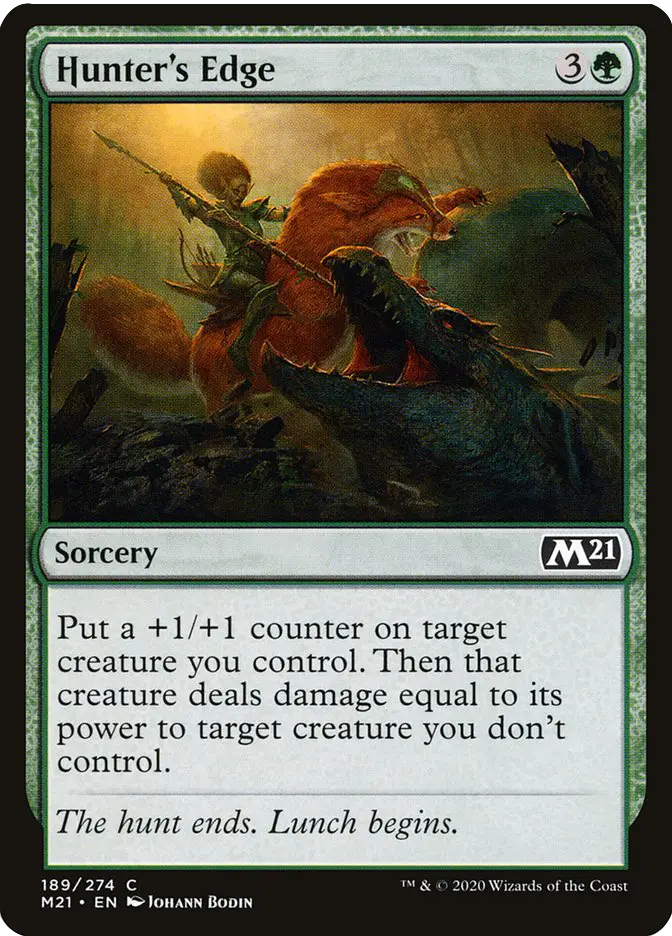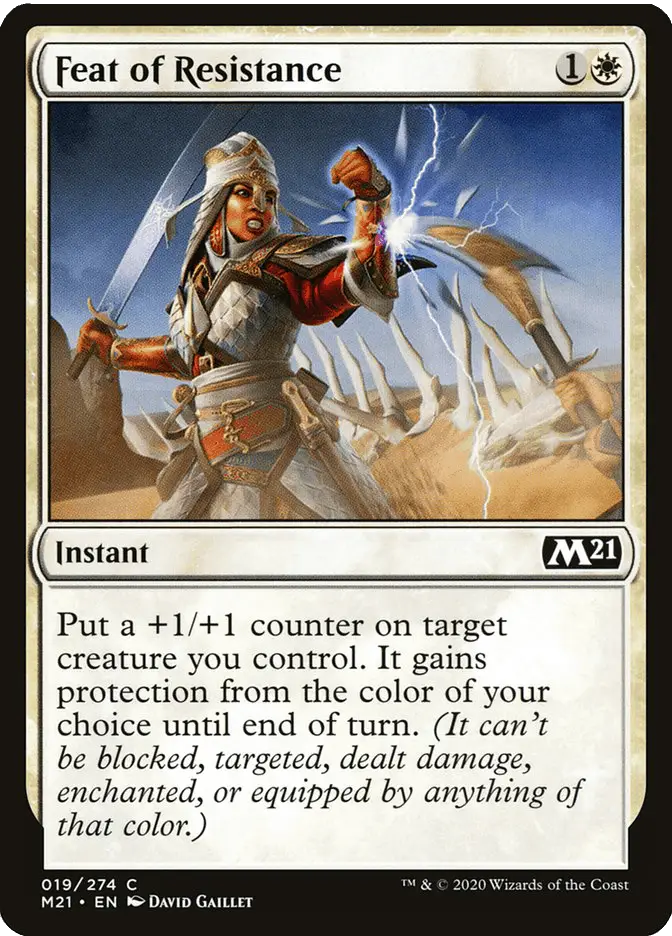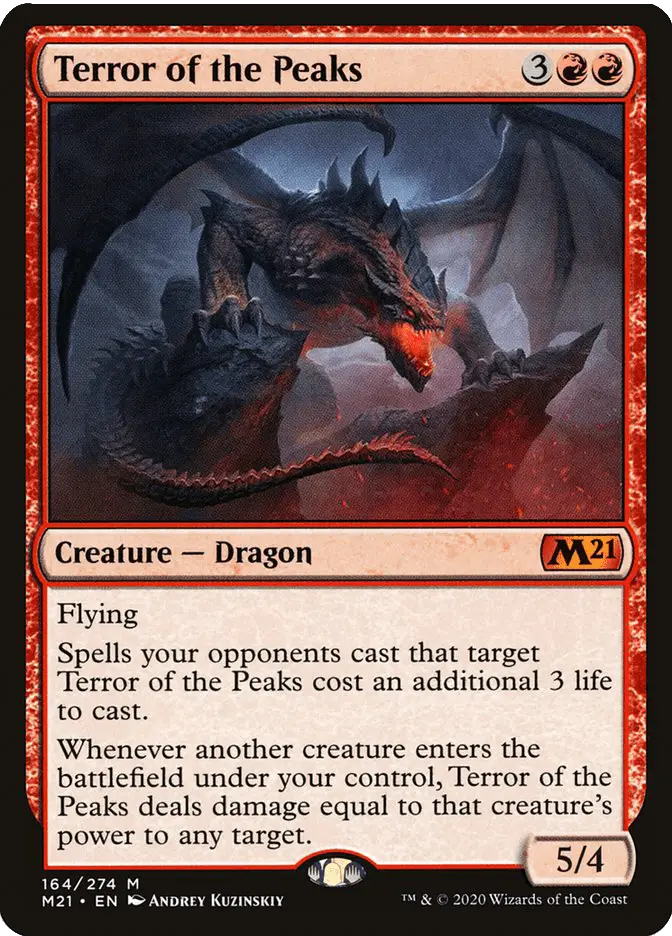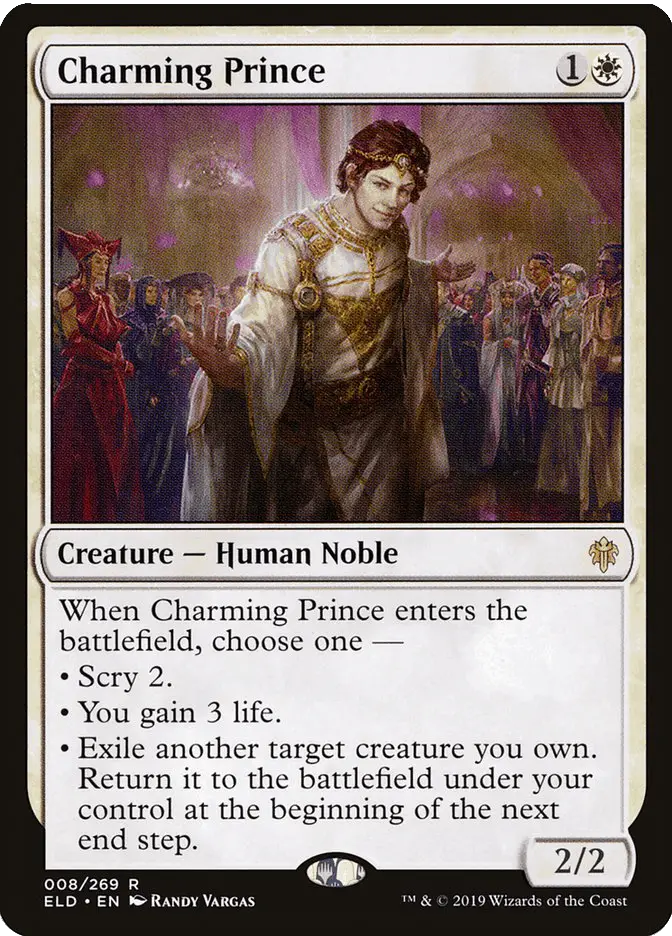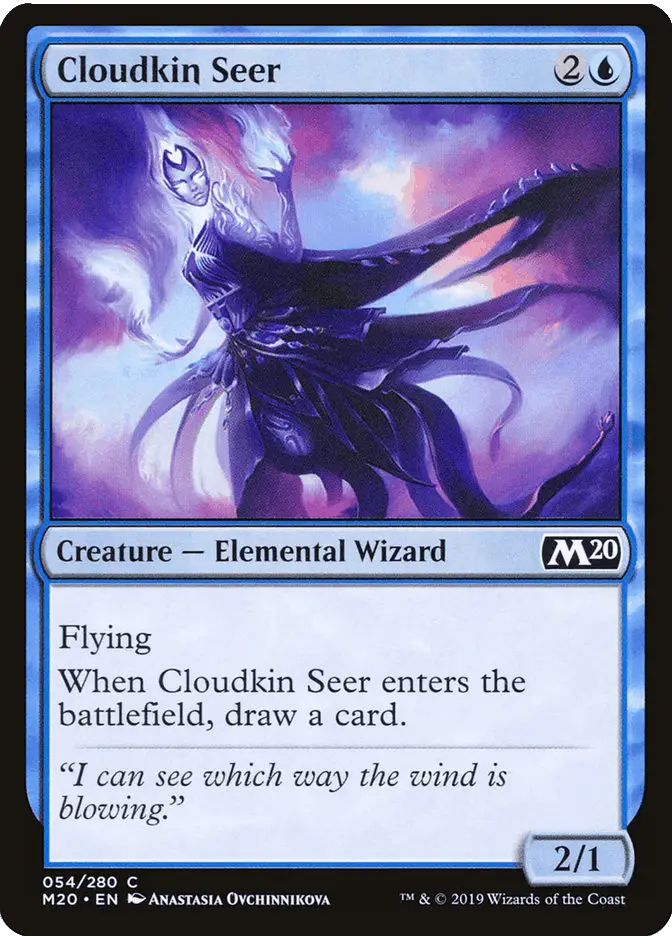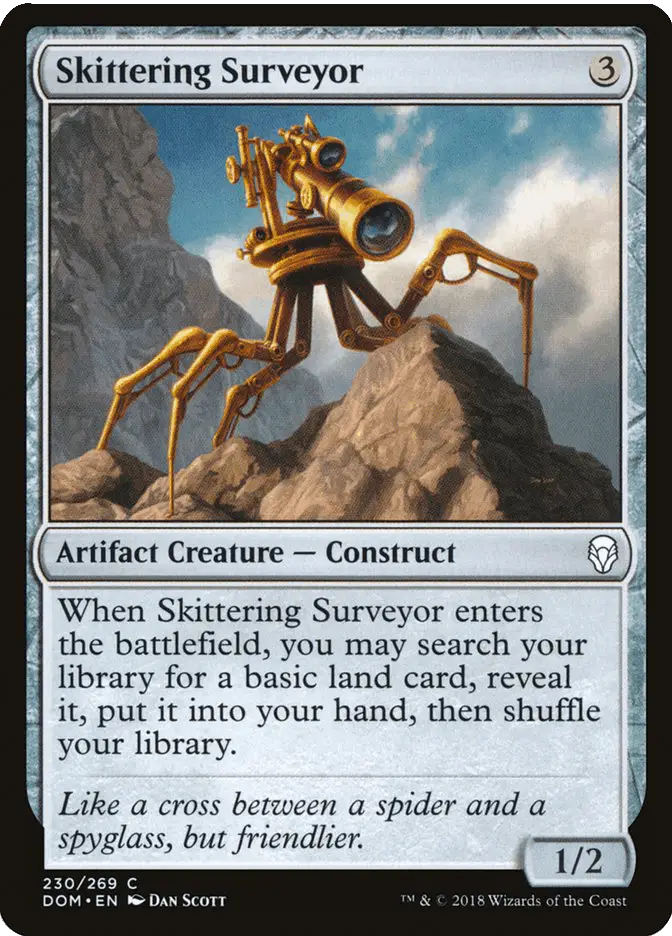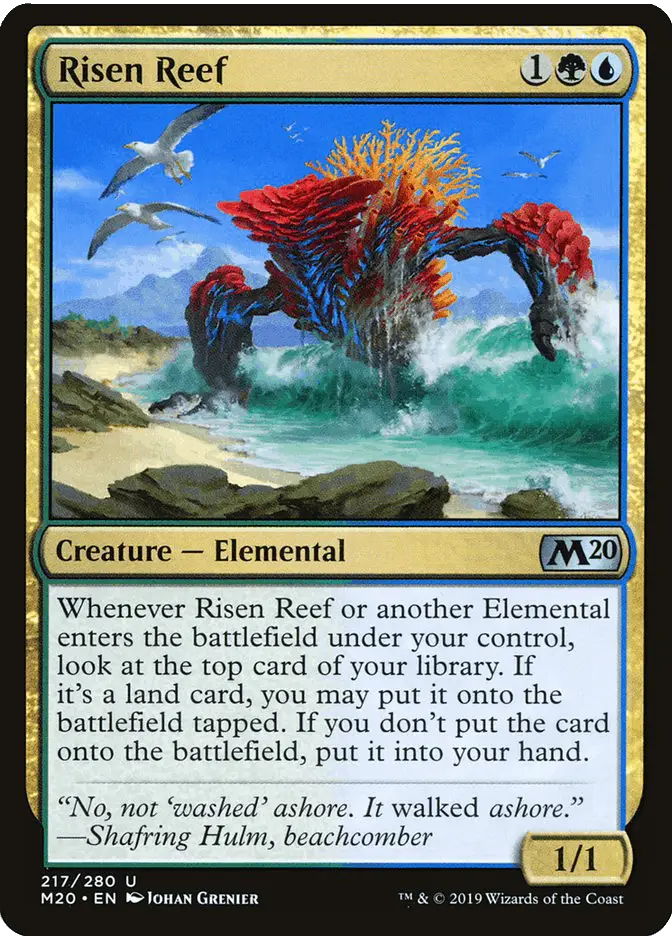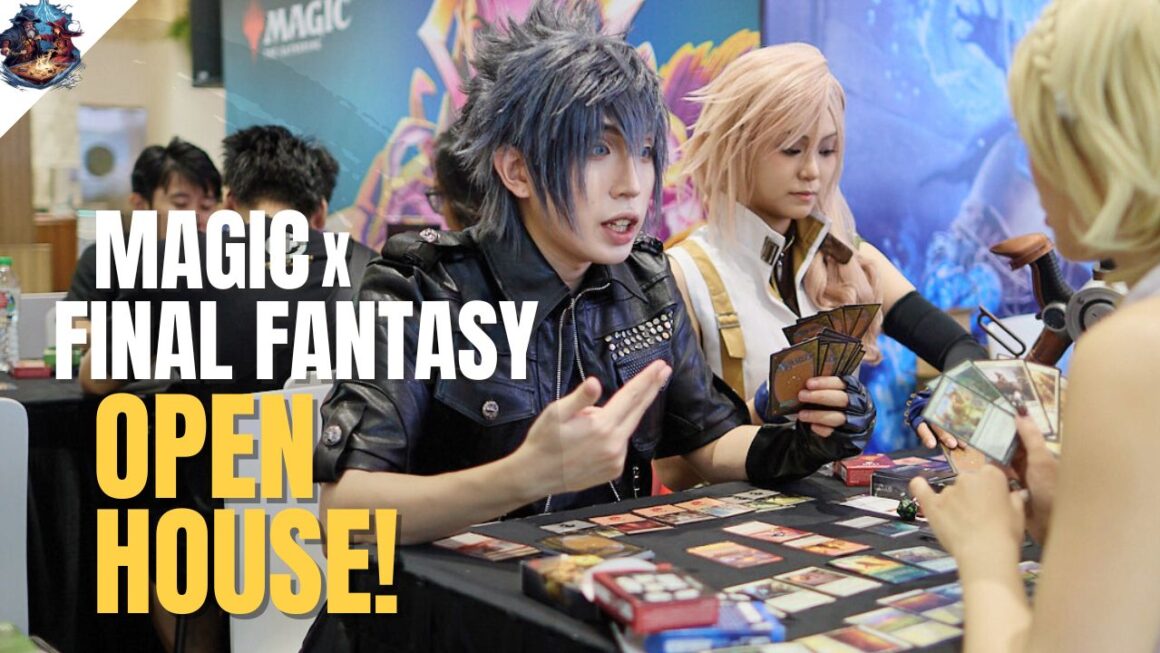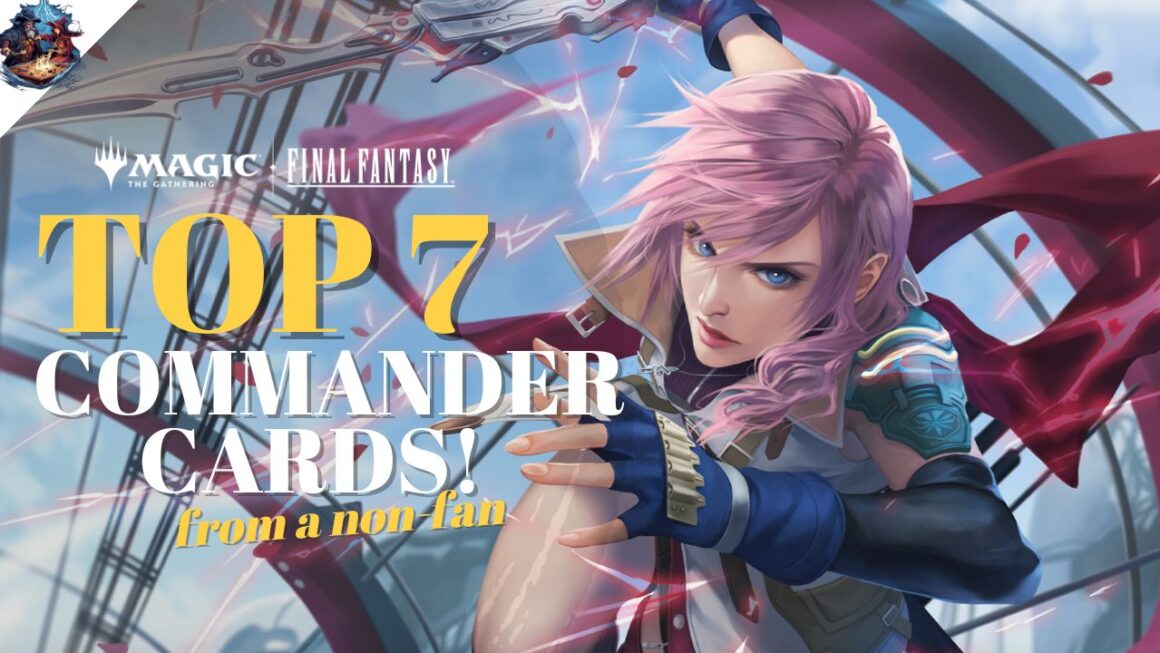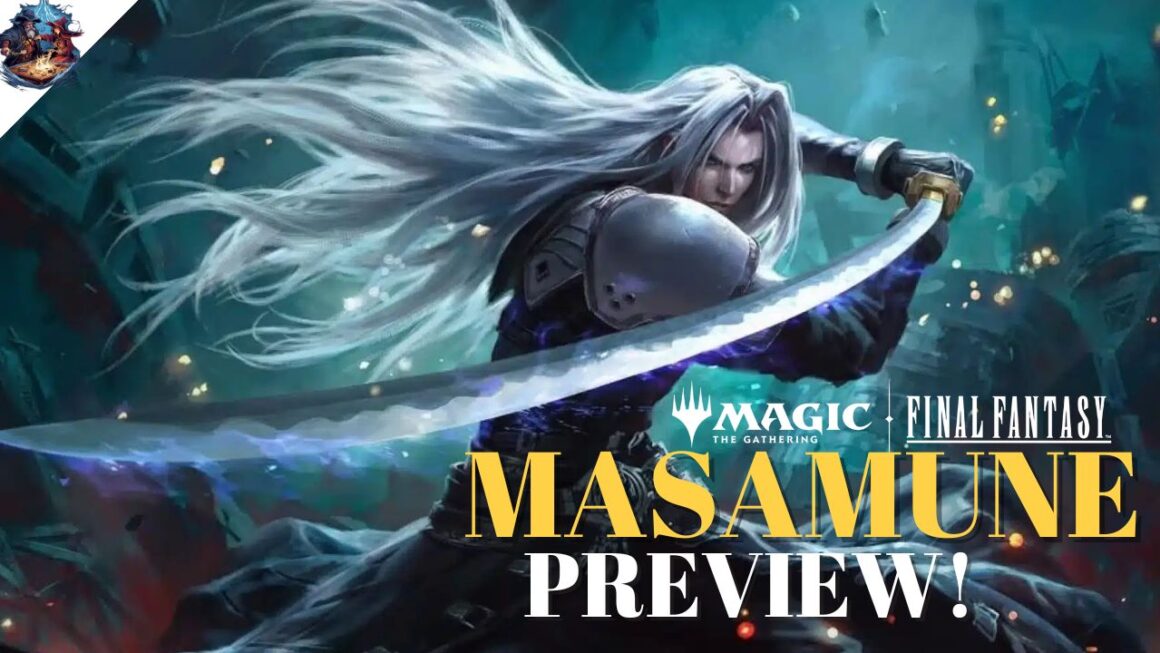Now that you’ve understood the basics of how Draft works, it’s key to understand what makes a great Draft deck. Think of your deck as a well-rounded athlete, who needs to be able to sprint, jump, and keep up the pace in a long game. An MTG game is very similar, as you’ll need as many options as you can get to deal with unexpected plays from the opponent.
The challenge of Draft is knowing what cards to pick over others. Presented with a fresh pack of 15 cards, the options can easily overwhelm. Not convinced? Check out this video to experience the process, and see if you can do better!
The best Draft decks can get you 7 wins (a complete run), and help you deal with the opponent’s unexpected plays. As you embark on your Draft and pick cards, do look out for these type of cards that can greatly increase your chances of victory:
Draft Deck Key Card 1: Removal Spells
Just like in a Constructed deck, you’ll need a direct way to deal with threats. Threats come in many forms, but the most common in Draft are Creatures and Planeswalkers. Although you will have Creatures of your own, you can’t always rely on them, simply because theirs might be bigger than yours. Their Planeswalkers can also be well guarded by the opponent’s blockers.
Their Creatures might also have attributes such as Flying or Menace and can evade your blockers. Having some spells to directly remove these threats is important in a Draft match.
Removal spells such as Blood Curdle and Scorching Dragonfire are only Commons, but are premium cards to pick in Draft. Make sure your 40-card deck has at least 5 different removal cards. These could be direct removal like the ones mentioned above (where the target gets destroyed or exiled), or indirect ones, such as Feat of Resistance or Capture Sphere.
We’ll mention this quite a lot in this article, but again balance and being well-rounded is key. There’s no point having 20 removal spells but no Creatures of your own, as you won’t be able to win the game.
Draft Deck Key Card 2: Winners (a.k.a “Bombs”)
If all players picked simple Creatures with very little upside, the game could eventually come to a standstill, where neither yours not your opponent’s Creatures can get in a beneficial attack.
That’s why a good Draft deck needs a strong winner. MTG players call this a “bomb” as these cards are literally a game changer. Some examples are powerful Planeswalkers such as Ugin, the Spirit Dragon or Teferi, Master of Time. Not only do Planeswalkers provide continuous value over many turns, their biggest ability can win games by itself.
There are also plenty of “bomb” Creatures – here we’ll use Terror of the Peaks and Elder Gargaroth as examples.
Terror of the Peaks is already a decent Creature without its abilities – a 5/4 Flying Creature for 5 mana. However it comes with 2 triggered abilities that boost your game. Firstly, it takes 3 additional life for the opponent to target the Terror with a removal spell. But more importantly, any Creature you cast later on will allow you to deal additional damage. In a game where you are behind, have zero Creatures while the opponent has 2 or 3, casting a Terror can turn the tide completely.
Similarly, Elder Gargaroth is a massive 6/6 Creature with Vigilance, Reach and Trample abilities for only 5 mana. But it gives you options any time it attacks of blocks. If you’re low on health, gain some life. If you need more cards, draw one. Its abilities are game-breaking in a Draft deck, but only if it survives the turn it is cast. That’s why removal spells (that were mentioned in the previous section), are also a crucial part of a good Draft deck.
Draft Deck Key Card 3: Early Blockers and Attackers
While we need big Creatures (bombs) and removal spells to get rid of the opponent’s own Bombs, a good Draft deck also needs a sizeable number of smaller Creatures to keep you alive.
The key is to have about five to seven Creatures that cost 2 or 3 Mana. That gives you a good chance to draw them in your opening hand. The first player that develops a board presence (usually just by having Creatures) will have a decent advantage and can start pressurising the opponent. Likewise, these little critters also keep your health total up by blocking the opponent’s Creatures.
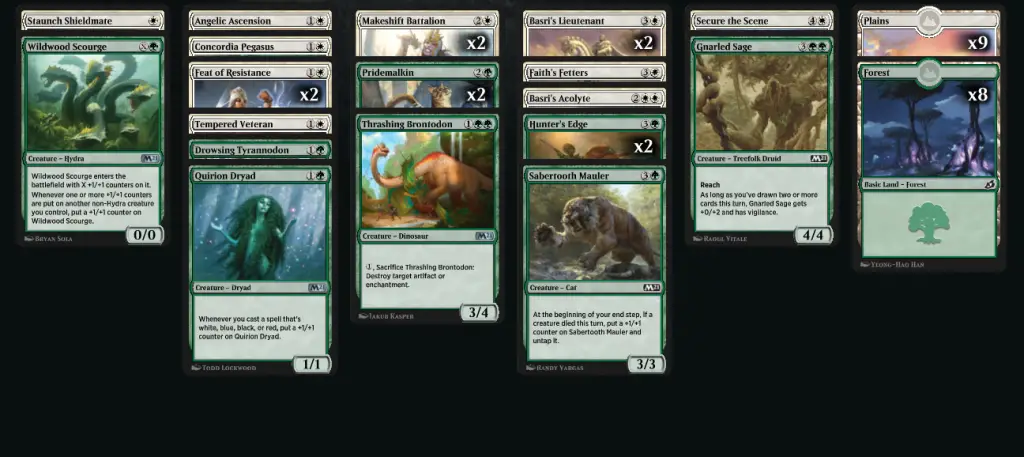
Take a look at a recent Draft deck I put together in an Arena Quick Draft event. I ended up with 10 Creatures that cost between 1-3 Mana (not including Wildwood Scourge). These are my early attackers and blockers that will hold the fort until I can get my best Bomb (Basri’s Lieutenant) down onto the Battlefield. The Lieutenant is great but not the most powerful of cards, hence I am relying on some early attackers to pressure the opponent.
Likewise, without these Creatures as early blockers, I could easily be overwhelmed by an Aggro deck filled with Creatures that hit fast and hard. In those situations, even having good Bombs will not help because it won’t be able to exert its influence in time. If you’re building an Aggro deck yourself and are picking many low-cost Creatures, make sure to always leave room for some bigger ones.
Draft Deck Key Card 4: 2-for-1 Spells
As you’ve seen in examples of Winners/Bombs, a great Creature will have multiple triggered abilities that can blast your opponent away. But since this is Draft and the packs have randomised cards, it will be a rare thing to pick a bomb in each Draft.
Hence you’ll need to look at other cards, many in the Common and Uncommon slots, to find good 2-for-1 value cards. These are cards that often have a “Enter the Battlefield” ability. It’s called 2-for-1 because not only are you getting a Creature on the battlefield, you’re also getting an additional triggered ability that adds value to your Draft deck.
Let’s look at some of the Common and Uncommons shown above. Skittering Surveyor lets you fix your Land base, by allowing you to search for any Basic Land. This is crucial in Draft as most times your deck will be running two or three colours. Even if you have three Lands of the same colour in your opening hand, with a Skittering Surveyor you’re able to guarantee finding that missing coloured mana.
Next is Risen Reef – a powerful card in an Elementals tribal deck, since it not only gives you a net +1 card when it enters the battlefield, but any other Elemental in future also generates additional card value. Cloudkin Seer is another Elemental that goes well with Risen Reef, but it’s also a great card on its own. It’s a 2/1 Flyer that lets you draw a card, essentially replacing the Seer that you’ve just cast.
As you can see, drawing more cards is very important in MTG, and even more so in a Draft deck. But why? We’ll be going right into it in our last section:
Draft Deck Key Card 5: Card Draw

In Draft matches, games can drag on longer than a regular Constructed match. Sometimes both players run out of steam with zero cards in hand, and are just relying on whatever card they draw each turn.
In MTG, card draw is important, and the player with more cards will have more options available, leading to a better chance for victory. Direct draw spells such as Of One Mind, Chemister’s Insight, and Sift are high picks for a Draft deck. However these will be of a lower priority than other cards such as Bombs or removal spells.
While it’s important to have around two or three cards in your Draft deck with drawing ability, players will need balance. Just like there’s no point running 20 removal spells without Creatures, there’s little use for having 20 draw spells but no others spells to cast.
End Step: Case Study of a Good Draft Deck
Each Draft you play will be different, because of different card pools, and how the other players pick the cards. However if you follow these strategies and pick these 5 card types, it can greatly improve the efficiency and deadliness of your Draft deck.
Let’s revisit the Green-White Draft deck I had built myself:

How many removal spells does it have? There’s a total of 7, counting Angelic Ascension, 2 Feat of Resistance, Faith’s Fetters, 2 Hunter’s Edge and 1 Secure the Scene. It’s a healthy number, and makes me more comfortable with dealing with threats.
How about Bombs? We have our two Basri’s Lieutenants, that work well only with other Creatures but can help me overwhelm the opponent as any trades with theirs will generate even more 2/2 tokens for me.
We’ve already established that we have plenty of early attackers and blockers – 10.
Next we have 2-for-1 cards. While we only have Pride Malkin and Basri’s Acolyte with pure “Enter the Battlefield” effects, most of our other cards generate additional value when some conditions are met. Wildwood Scourge, Quiron Dryad, Makeshift Battalion, and even Basri’s Lieutenant all generate additional +1/+1 counters, which is the theme synergising this deck.
The weakest link in this Draft deck is card draw. I have zero cards that allow us to draw more and replenish our hand. To offset this disadvantage, I have to ensure that each play is beneficial and economical, and generates some kind of value.
For those who are curious, this deck eventually made a 5 win – 3 loss run. It was a good result but slightly disappointing as I expected it to reach at least 6 wins, especially with the synergy and removal at our disposal. That’s the unpredictable nature of MTG as a whole, and even more so in the Draft format.
For further reading, do check out the BREAD system which helps you categorise cards. That system and ours are based on the same principles, but ours is geared towards overall strategy and building a well-rounded deck.



